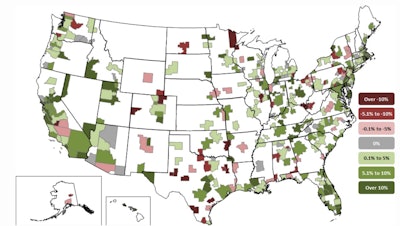
Construction employment increased in 243 out of 358 metro areas, was unchanged in 43 and declined in 72 between January 2015 and January 2016.
Construction employment increased in 243 out of 358 metro areas, was unchanged in 43 and declined in 72 between January 2015 and January 2016, according to an Associated General Contractors of America analysis of federal employment data. Association officials noted that many of the metro areas experiencing drops in construction employment were in energy-producing metro areas.



















